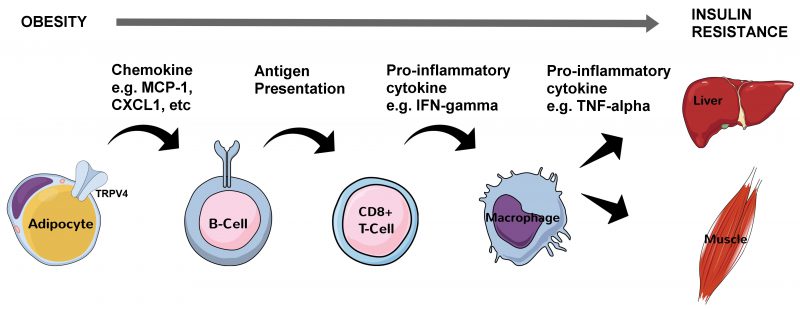Back to article: Could de-stressing the brain be the solution for long-term weight loss?
FIGURE 1: Molecular and cellular processes linking obesity with systemic insulin resistance. Swelling (hyperplasic) visceral adipocytes in obesity have hyperactivated TRPV4 which leads to changes in gene expression (through extracellular related kinase 1/2 signaling) including an increase in chemokine production. This sets into motion a sequence of molecular and cellular events ultimately leading to insulin resistance in hepatocytes and myocytes in part through inhibitory serine 120 and serine 210 phosphorylation of insulin receptor substrate 1 in these cells by TNF-α. CXCL1 – chemokine (C-X-C motif) ligand 1, IFN-gamma – interferon gamma, MCP-1 – monocyte chemoattractant protein 1, TNFα – tumor necrosis factor alpha, TRPV4 – transient receptor potential vanilloid 4.

